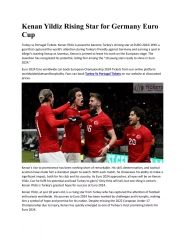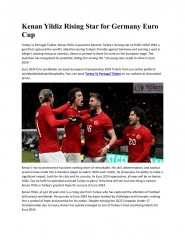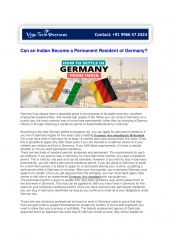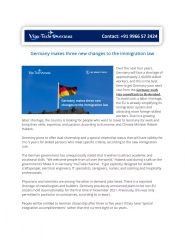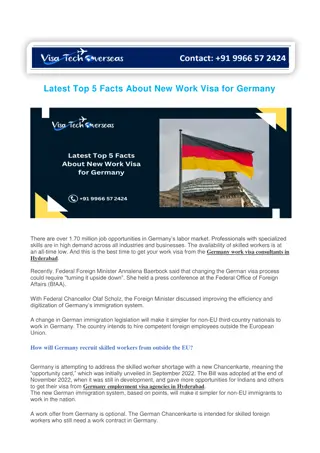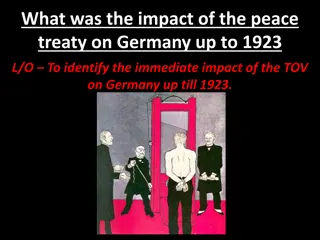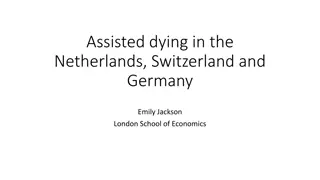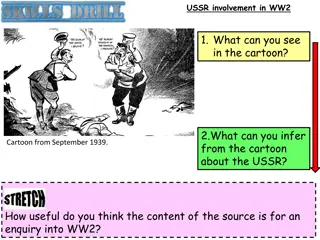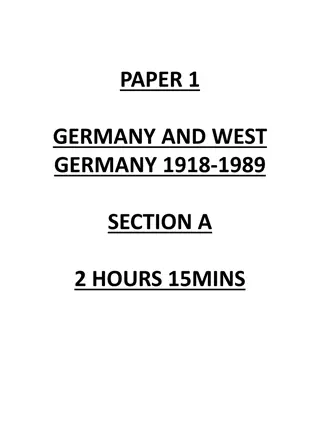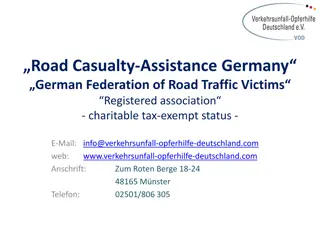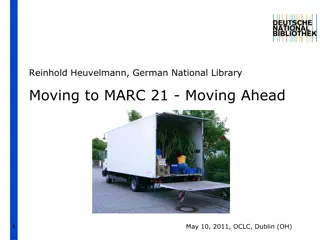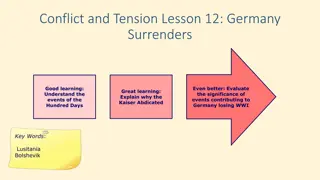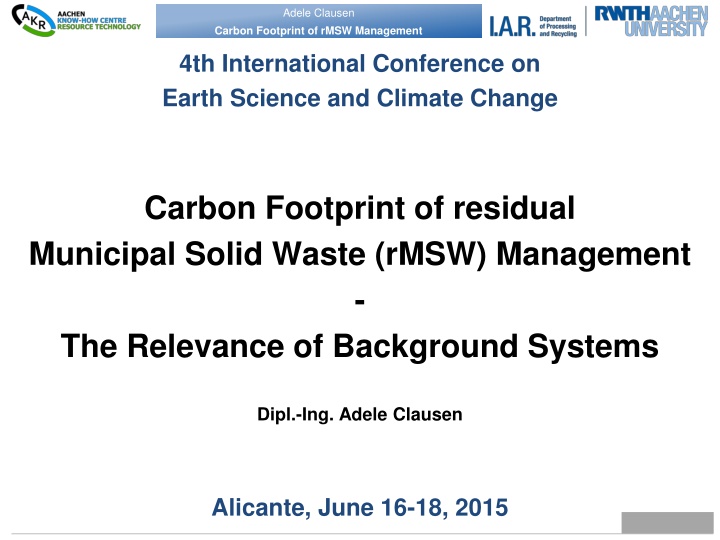
Adele Clausen - Carbon Footprint of rMSW Management and Treatment Technologies
Adele Clausen's research delves into the carbon footprint of residual Municipal Solid Waste (rMSW) management, including the GHG emissions, treatment options, origin of emissions, relevant background system components, and exemplary modeling of rMSW compositions. The study also explores selected treatment technologies such as energy recovery, incineration, and biomass fuels to mitigate environmental impacts.
Download Presentation

Please find below an Image/Link to download the presentation.
The content on the website is provided AS IS for your information and personal use only. It may not be sold, licensed, or shared on other websites without obtaining consent from the author. If you encounter any issues during the download, it is possible that the publisher has removed the file from their server.
You are allowed to download the files provided on this website for personal or commercial use, subject to the condition that they are used lawfully. All files are the property of their respective owners.
The content on the website is provided AS IS for your information and personal use only. It may not be sold, licensed, or shared on other websites without obtaining consent from the author.
E N D
Presentation Transcript
Adele Clausen Carbon Footprint of rMSW Management 4th International Conference on Earth Science and Climate Change Carbon Footprint of residual Municipal Solid Waste (rMSW) Management - The Relevance of Background Systems Dipl.-Ing. Adele Clausen Alicante, June 16-18, 2015
Adele Clausen Carbon Footprint of rMSW Management GHG emissions from rMSW management rMSW = what remains after separate collection - Food - Yard - Wood - Paper - Plastics - Metals - Inerts - Textiles - Nappies - Residuals ? Treatment options: CH4 Avoided Burden GHG Emission - Landfilling - Incineration - Mechanical-biological treatment (MBT) 3
Adele Clausen Carbon Footprint of rMSW Management Selected treatment technologies EU LIFE+ Project MARSS rMSW rMSW rMSW Energy rMSW Energy MBT I MBT II* (drying) Incineration RRBF* (composting) Metal Metal Energy recovery RRBF* Metal Plastic Landfilling Landfilling Landfilling CH4 CO2 Energy CH4 Energy CH4 Energy CO2 Energy * RRBF = Refused Refined Biomass Fuel (Results from EU LIFE+ Project MARSS)
Adele Clausen Carbon Footprint of rMSW Management Origin of GHG emissions Direct emissions - CH4 - CO2 Biodegradable materials under anaerobic conditions Combustion of fossil carbon Indirect emissions - Energy demand GHG emissions from energy generation Avoided burdens - Materials - Energy recovery Substitution of primary raw materials Substitution of GHG emissions from energy generation Relevant background rMSW composition - Metals / plastics - Fossil carbon - Biodegradable materials - Energy content Energy background system 5
Adele Clausen Carbon Footprint of rMSW Management Background for examplary modelling 100% rMSW Composition A: Separate collection of plastics Inerts 90% 21% 23% Metals NF 80% Metals Fe rMSW Composition B: Separate collection of biowaste 3% 3% 70% Plastics 3D 9% 11% Plastics 2D 60% 15% 11% Residuals 50% 6% 9% Nappies 2% 40% Energy background system Textiles 14% 30% Paper 5% 20% 5% 39% Wood 1. 2. 10% Yard Fossil Renewable 14% Food 0% Composition A Composition B 6
Adele Clausen Carbon Footprint of rMSW Management Selected treatment technologies rMSW rMSW rMSW Energy rMSW Energy Composition A Fossil MBT I MBT II* (drying) Incineration RRBF* energy background High biomass content (composting) Metal Metal Energy recovery RRBF* energy background Metal Composition B Renewable Plastic High plastics content Landfilling Landfilling Landfilling CH4 CO2 Energy CH4 Energy CH4 Energy CO2 Energy * RRBF = Refused Refined Biomass Fuel (Results from EU LIFE+ Project MARSS)
Adele Clausen Carbon Footprint of rMSW Management Modelling results 8
Adele Clausen Carbon Footprint of rMSW Management Conclusion No general statement in terms of superiority of a single technology - Background = Decisive relevance on GHG emissions from rMSW management Current situation: - Large share of fossil energy background Pro incineration Future trend: - Renewable energy background ? Pro MBT 9
Adele Clausen Carbon Footprint of rMSW Management Contact Dipl.-Ing. Adele Clausen Department of Processing and Recycling RWTH Aachen University THANK YOU! W llnerstr. 2 52062 Aachen +49 241 80 96 123 (fon) +49 241 80 92 232 (fax) clausen@ifa.rwth-aachen.de www.iar.rwth-aachen.de 10
Adele Clausen Carbon Footprint of rMSW Management RELEVANCE Kyoto Protocol: Reduction of GHG emissions (e.g. from waste) EU Waste Framework Directive: Reduction GHG emissions from waste, LCA EU Landfill Directive: Biomass reduction target 11
Adele Clausen Carbon Footprint of rMSW Management Interaction of Stakeholders BACKGROUND SYSTEM 12
Adele Clausen Carbon Footprint of rMSW Management Dynamics of the background BACKGROUND SYSTEM 13
Adele Clausen Carbon Footprint of rMSW Management Content 1 Only upstream to rotting FOREGROUND SYSTEM 2 Only applicable downstream to screening 3 Only applicable downstream to bio-drying 4 Only applicable downstream to Fe separation 5 Only applicable downstream to bio-drying and screening 14
Adele Clausen Carbon Footprint of rMSW Management Link Population - Foreground MODELLING 15
Adele Clausen Carbon Footprint of rMSW Management Link Markets/Population & Climate - Foreground Processes Market/Legislation Climate/Geology - Energy consumption - Shredding - Overflow - Energy consumption - Product - Impurities - Energy consumption - Oxidisation - GHG transformation - Energy consumption - Oxidisation - GHG transformation - Energy consumption - Emission factor marginal energy - Screening MODELLING - Separation - Bio-drying - Temperature air Bio-stabilisation - Emission factor marginal energy Energy supply - Type of landfill - LFG catchment - Energy recovery - Temperature air - Humidity air Landfill 16
Adele Clausen Carbon Footprint of rMSW Management Generic flow diagram of the Model THE MODEL 17
Adele Clausen Carbon Footprint of rMSW Management Scenarios EXEMPLARY MODELLING Landfill MSWI MBS MBD 1.0 1.1 2.0 3.0 3.1 3.2 3.3 4.0 4.1 4.2 - - - x x x x - - - Biological stabilisation - - - - - - - x x x Biological drying - - - - - - - - x x Screen II - - x - - - - x x x MSWI I - - - - - - - - x x Fluidised bed - - - - - x x - - - MSWI II - - x x x x x x x x Metal separation I - - - x x x x - x x Metal separation II - - - - - - - - x x Plastics separation - - - - - - - - x x RDF refinery - - - - - x x - - - RTO - x - - x - x - - x LFG catchment * 18 * LFG catchment efficiency = 50%
Adele Clausen Carbon Footprint of rMSW Management RESULTS 19 * LFG catchment efficiency = 50%
Adele Clausen Carbon Footprint of rMSW Management Summary Context significantly impacts the climate performance Priority order is not fix Composition and energy background are of special relevance CONCLUSION Outlook Anaerobic digestion should be considered in future investigations The scope may be extended to non-EU countries Real context situations can be investigated Data for uncertainty studies should be investigated 20

